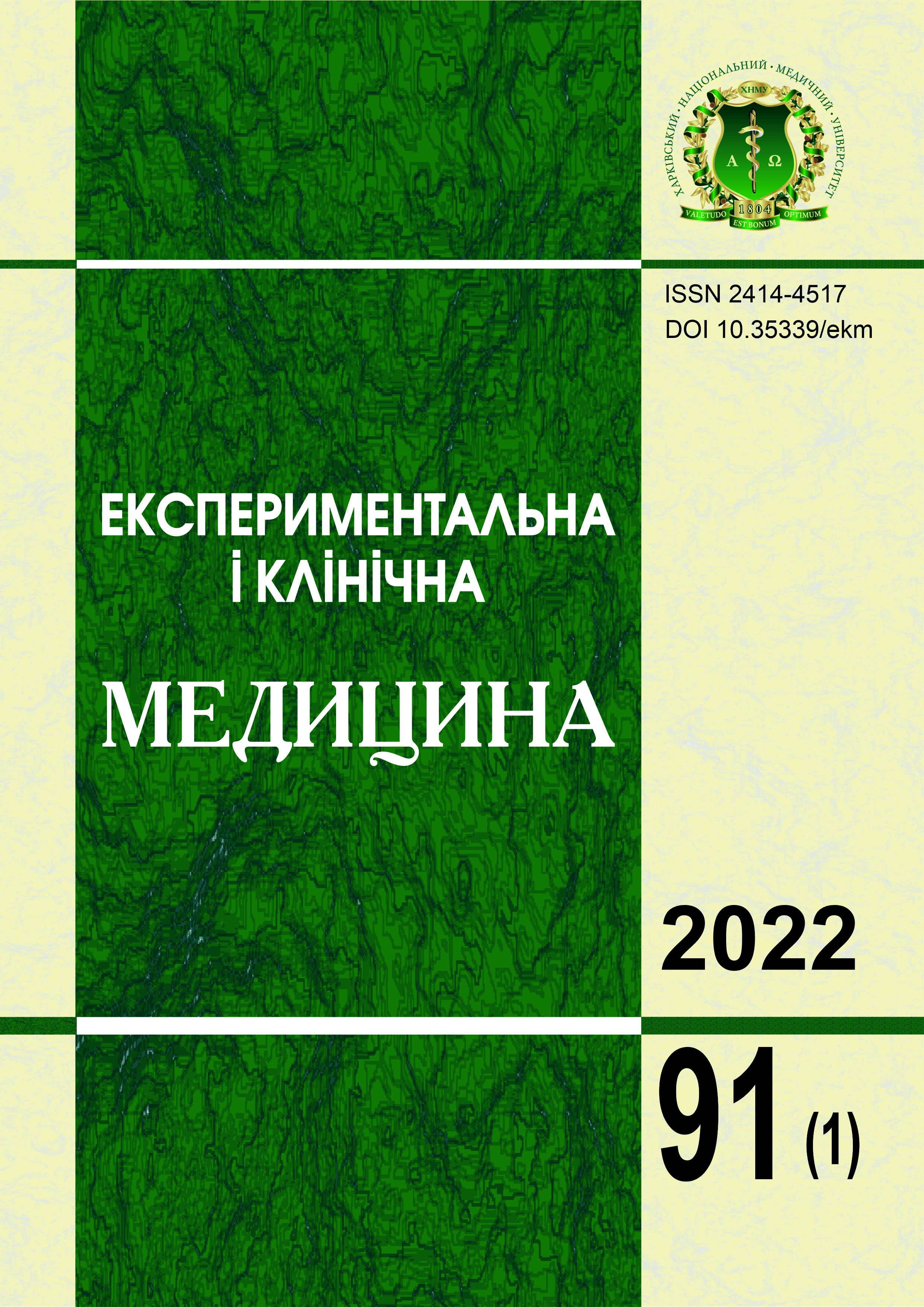Abstract
Urolithiasis is one of the most common urological diseases, which has a significant negative impact on the economics of national health care systems around the world. Risk factors for the development of this pathology are trends in nutrition and lifestyle, heredity, concomitant diseases, among which the dominant role belongs to diabetes and obesity. The prevalence of urolithiasis, according to various epidemiological studies, is 1‒20% and has certain geographical features, which are determined by regional climatic and socio-economic factors. The prevalence rate of urolithiasis in European countries is 5‒9%, among which the leading positions belong to the countries of Eastern Europe, in particular Ukraine. The work presents a retrospective analysis of the dynamics of the epidemiological indicators of urolithiasis in the Kharkiv region for the period 2010‒2019. The data from State statistical reports of Health care institutions were used for the analysis. The prevalence and incidence of urolithiasis were studied taking into account gender and age criteria, as well as place of residence. In the statistical analysis, the average value and standard deviation were calculated Process trends were determined by trend modeling (linear approximation). The prevalence of this disease among the adult population over a ten-year period has a tendency to increase among patients of working age. Peculiarities of the gender structure of this indicator were not found. Predominantly higher levels of prevalence of urolithiasis among urban residents were established. When extrapolating the prevalence rate for the next five years, one should expect an increase in the number of urolithiasis cases among people of working age with a simultaneous decrease in this rate in the older age category.
Keywords: urolithiasis, prevalence, morbidity, gender-age structure.
References
Canvasser NE, Alken P, Lipkin M, Nakada SY, Sodha HS, Tepeler A, et al. The economics of stone disease. World J Urol. 2017;35(9):1321‒9. DOI: 10.1007/s00345-017-2003-y. PMID: 28108799.
Geraghty RM, Cook P, Walker V Somani BK. Evaluation of the economic burden of kidney stone disease in the UK: a retrospective cohort study with a mean follow-up of 19 years. BJU Int. 2020;125:586‒94. DOI: 10.1111/bju.14991. PMID: 31916369.
Shin S, Srivastava A, Alli NA, Bandyopadhyay BC. Confounding risk factors and preventative measures driving nephrolithiasis global makeup. World J Nephrol. 2018;7(7):129‒42. DOI: 10.5527/wjn.v7.i7.129. PMID: 30510912.
Alkhunaizi AM. Urinary stones in Eastern Saudi Arabia. Urology Annals. 2016;8(1):6‒9. DOI: 10.4103/0974-7796.164841. PMID: 26834393.
Bastug F, Gunduz Z, Tulpar S, Poyrazoglu H, Dusunsel R. Urolithiasis in infants: evaluation of risk factors. World J Urol. 2013;31(5):1117‒22. DOI: 10.1007/s00345-012-0828-y. PMID: 22258667.
Sorokin I, Mamoulakis C, Miyazawa K, Rodgers A, Talati J, Lotan Y. Epidemiology of stone disease across the world. World J Urol. 2017;35(9):1301‒20. DOI: 10.1007/s00345-017-2008-6. PMID: 28213860.
Scales CD Jr, Smith AC, Hanley JM, Saigal CS; Urologic Diseases in America Project. Prevalence of kidney stones in the United States. Eur Urol. 2012;62(1):160‒5. DOI: 10.1016/j.eururo.2012.03.052. PMID: 22498635.
Alatab S, Pourmand G, El Howairis Mel F, Buchholz N, Najafi I, Pourmand MR, et al. National Profiles of Urinary Calculi: a Comparison Between Developing and Developed Worlds. Iran J Kidney Dis. 2016;10(2):51‒61. PMID: 26921745.
Fisang C, Anding R, Muller SC, Latz S, Laube N. Urolithiasis – an interdisciplinary diagnostic, therapeutic and secondary preventive challenge. Dtsch Arztebl Int. 2015;112(6):83‒91. DOI: 10.3238/arztebl.2015.0083. PMID: 25721435.
GBD 2019 Diseases and Injuries Collaborators. Global burden of 369 diseases and injuries in 204 countries and territories, 1990‒2019: a systematic analysis for the Global Burden of Disease Study 2019 [published correction appears in Lancet. 2020 14;396(10262):1562]. Lancet. 2020;396(10258):1204‒22. DOI: 10.1016/S0140-6736(20)30925-9. PMID: 33069326.
Detsyk ОZ, Solomchak DB. Analysis of Peculiarities and Tendencies of Urolithiasis Incidence in Ivano-Frankivsk Region. Galician Medical Journal. 2015;22(2):147‒50. Available from: https://is.gd/AakVQ3

